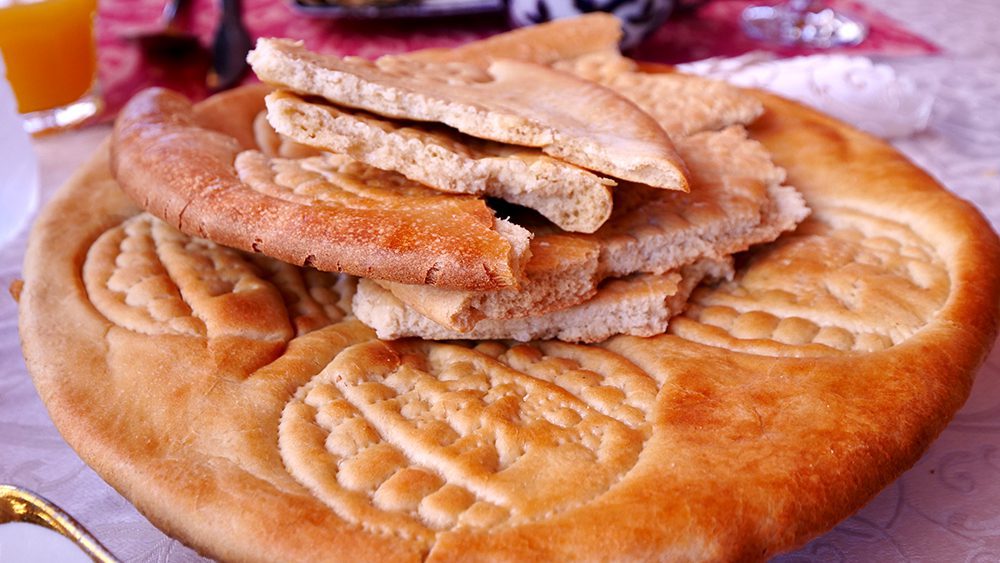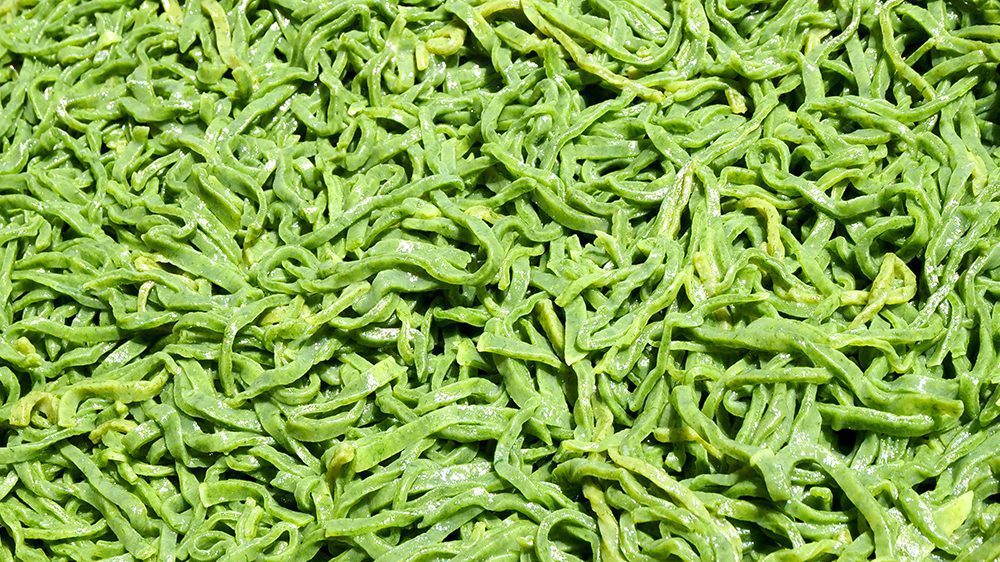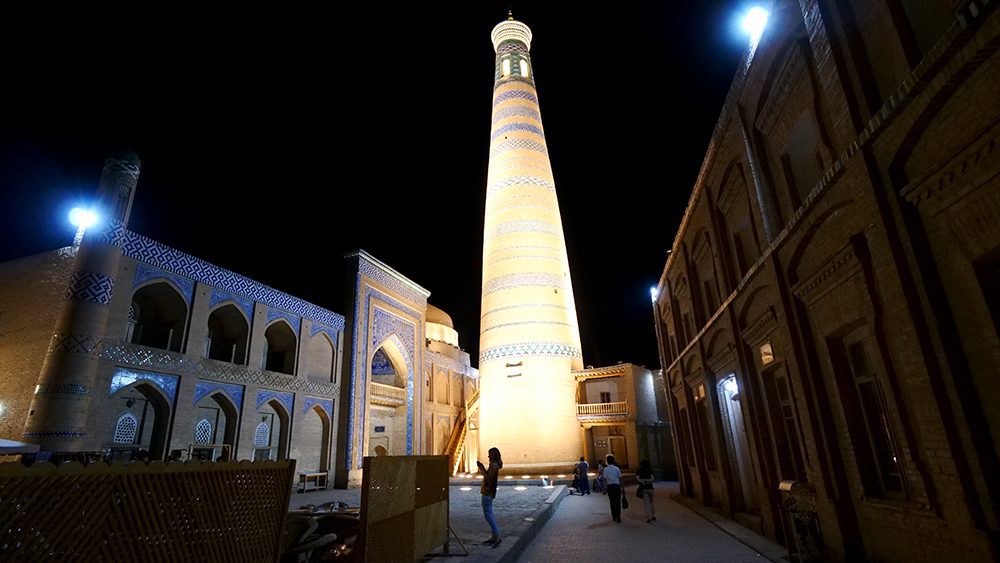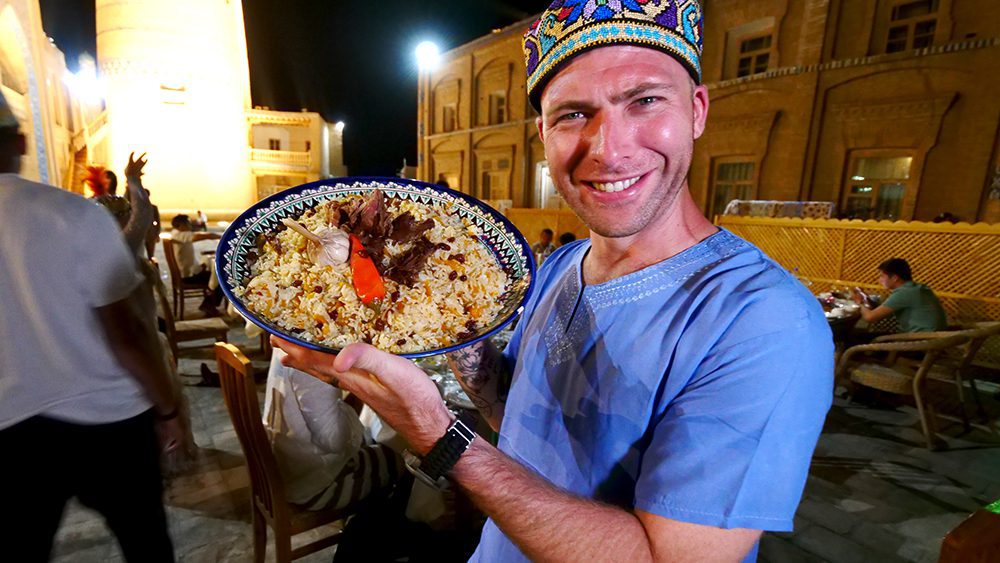Located in the Khorezm Region in western Uzbekistan is the beautiful city of Khiva. This city is known for its historic walled city, Itchan Kala. It is there that all the things you must do in Khiva are located. Though the city didn’t appear in Muslim travel accounts until the 10th century, archaeological evidence shows that it dates back 1,500 years. There is some debate as to how old the city actually is, as artifacts dating back 2,500 years have been discovered there.

Khiva is the former capital of the Khwarezmia area and the Khanate of Khiva, an Uzbek state that existed from 1511 to 1920. Khiva was also a vital way station along the Silk Road. Ancient traders and explorers would often stop there along the route, which linked Europe with China. There, merchants would sell everything from carpets to camels to concubines!

Though Khiva’s historical sites are its main draw, there are plenty of other things you must do in Khiva. The city also features fantastic cuisine that will have your mouth watering from the very first bite. You can also check out the stunning local crafts and even take some home with you.

Though I only spent one day there in August of 2019, this gorgeous desert oasis is one of my favorite cities I visited that year. I fell in love with it the moment I arrived and hit the ground running to explore as much of it as I could. One of my favorite things about Khiva is that people still live there, so it’s very much a living museum that’s as rich with culture and interesting stories as it is with history. These are the 5 things you must do in Khiva, Uzbekistan.

As a history buff, I had a field day exploring Khiva. Its rich history can’t just be seen within the ancient city walls of Itchan Kala, the walled inner city. It can be felt there, too. Passing through its main city gate made me feel like I had been teleported to Agrabah, the fictional city in Disney’s Aladdin. Everywhere I looked, there were magnificent mosques, palaces, madrasas, and minarets, most of which date back to the 18th and 19th centuries. In fact, there are a whopping 54 historical sites and 250 historical homes within Itchan Kala, which is only 97 acres in size. It’s no wonder this walled city was not Uzbekistan’s first UNESCO World Heritage Site, but also Central Asia’s first UNESCO World Heritage City.

One of the first structures you’ll notice even before you pass through the city gates is a blue minaret that stands proudly over nearly all of the sites in the area. This is Kalta Minor, a squat, fat minaret laid with gleaming turquoise tiles. Because most minarets are tall and slender, its unusual width is one of its defining features.

The construction of Kalta Minor began back in 1851 and was commissioned by Qungrat ruler Muhammad Amin Khan. In order to restore the glory of the waning Khanate, Khan initiated a plan that involved demolishing the city walls for additional space.

According to legend, he also wanted to build the tallest minaret in Central Asia, one so tall he could see the city of Bukhara from the top. However, his plans stalled after he died battling the Teke Turkmen in 1855. The minaret was left half-finished and named Kalta Minor, which translates to “short minaret.”

Along with Kalta Minor, the other eye-catching minaret in Itchan Kala is Minaret Islam-Khoja, the tallest minaret in Central Asia. As you wander the markets in the shadow of the minaret, you’ll find lots of stands selling souvenirs that feature likenesses of the landmark. For 200,000 som (a little over $21 USD), you can buy a beautifully carved stick that is said to protect your home from the devil. A miniature version of the minaret is carved into the end of the stick. I was able to haggle a bit and got it for 150,000 som, or just under $16 USD.

As the tallest minaret in Central Asia, it takes a bit of a hike to reach the top. Though this minaret was only completed in 1908, it retains the feel of a much older structure, as it was built to mimic the styles of the 14th-century minarets that once stood in Khiva. The 118-step stairwell to the top is tight and cramped and features low ceilings, so you’ll probably have to duck if you’re six feet tall like me! At one point, I had to use my hands to help me ascend the stairs, which are very steep.

The views of Khiva from above were well worth the trek, though. I could see all of the local sites, including the mosques, madrasas, and city walls. From above, it reminded me of places I had visited in Morocco. Making a stop at Minaret Islam-Khoja is definitely among the things you must do in Khiva!

Also among the things you must do in Khiva is pay a visit to Djuma Mosque. This religious building is the biggest mosque in Khiva and dates back to the 10th century. The original, ancient mosque was demolished during its history and then rebuilt in 1788 using the same layout as the original. It features a flat ceiling with three holes in it, to allow moonlight to wash over worshippers at night.

The most defining feature of Djuma Mosque is its extraordinary hypostyle hall, which is made up of 213 carved wooden pillars. These pillars are almost mementos representing various eras of conquest in Khiva’s history. Engraved into each pillar are messages written in the language of that pillar’s era’s conqueror.

Most of the pillars in the hypostyle hall were carved from tree trunks in the 18th and 19th centuries, but 21 of them date back to the 10th-12th centuries. One hundred and twelve of the columns were taken and repurposed from ancient structures in the city. It’s an incredible peek into the events that made Khiva the city it is today and is without question, one of the best things you should do in Khiva.

History buffs who would like to check out the summer residence of the khan and his relatives can do so at Tash-Khovli Palace. This gorgeous 19th-century rectangular complex stands in the eastern section of Itchan Kala and is made up of three yards and several buildings. The reception of the palace features sensational blue tilework and high ceilings that must rise up at least fifty feet.

The ceilings themselves are also incredible, and have intricate, symmetrical designs in the woodwork that I couldn’t help but marvel at with my friend Juliana from Traveling Jules. The designs on the ceiling also have Arabic writing engraved into them!

The road leading to Tash-Khovli Palace is also a great place to explore. It’s the original, 200-year-old road and is laid with stones that bring to mind Ancient Roman streets. The king’s carriage rode along this road so frequently that the wheels actually dug gouges into the stones, which can be seen today. Speaking of the king’s carriage, you can see it on display along the road. It was a gift given by the Russian emperor Alexander II in 1876!

It’s my belief that you can’t truly get to know a location without diving into its food. After trying several incredible dishes in the Uzbek capital of Tashkent, I was excited to check out the fare in Khiva. To do so, I headed to Yasavul Boshi Restaurant for a quick lunch with my fellow travel content creators from the World Influencers Congress.

My meal started with some soft, flaky Uzbek flatbread that was made up of several tasty layers. Then, we were served three salads: a standard salad with herbs, tomatoes, and cucumber; a hot and soupy tomato-and-eggplant salad, and an incredibly fresh salad featuring eggplant and carrots.

I’m a massive fan of eggplant, so I loved the latter two salads. They were incredibly tasty even though they didn’t contain any spices. but they were so tasty. The Uzbek tomatoes were on another level and were so juicy that they exploded in my mouth! I followed the salads with a pure and refreshing pumpkin soup.

The main dish was a noodle dish called shivit oshi. It consists of green, dill-infused noodles topped with beef, peppers, tomatoes, onions, potatoes, and carrots. I didn’t love it on its own, but it’s also served with a yogurt sauce you can mix into the noodles to turn it into a rich and tasty creamy pasta. The yogurt turns the dish from just okay to extraordinary!

We ended our meal with three types of traditional dumplings called barak. I really enjoyed the tukhum-barak, which are like Italian ravioli with an egg filling. The two beef barak were also quite nice. They’re served cold, because they’re meant to be eaten during hot summer months. The first of the two I tried reminded me of a Chinese slippery wonton, while the second contained extremely tender beef.

The presence of the noodles and dumplings in Khiva is thanks to the Silk Road. These dishes are Uzbek variations of dishes that were brought to the country by merchants and traders from China. My favorite dish of the meal, the shivit oshi, was like getting a taste of the Silk Road. Having it is one of the top things you must do in Khiva!

When you pass through Khiva’s western gate, it’s impossible to miss the stand selling large, fluffy, wool hats. These hats, called chugirmas, are a vital part of the region’s culture and history. They were traditionally sported by men from the Khorezm Region and were worn as a status symbol. Traditionally, sons inherited chugirmas from their fathers. Many locals honor their ancestors by keeping chugirmas that once belonged to them.

The large, furry chugirmas, called to’galak chugirma, were once only worn by the elite ruling class, but are commonplace today. The round, curly, and long-haired silkma chugirma is the most common version available today. A short-fur variation called sherozi chugirma can also be found.

I loved the look of the chugirma I donned, but the hair was so thick I couldn’t see out of it. The chugirma only stayed on my head for a minute because the temperature was hovering around 100°F. I was boiling underneath it! That said, wearing one is among the unforgettable things you must do in Khiva!

One of my favorite things to do when I travel is to visit handicraft markets. They’re a fantastic place to buy one-of-a-kind local crafts you can’t find anywhere else and also offer a peek into local life and culture. In many places around the world, the ancient craft-making traditions are slowly dying in favor of modernization. I was thrilled to see that in Khiva, those traditions are still alive and well.

In Khiva’s markets, you can find everything from beautiful carpets to fragrant spices in burlap sacks. But the thing that caught my eye the most was the intricate woodwork. There, I got to watch local craftsmen and their young sons create gorgeous works of art from pieces of wood, right in front of my eyes. Among the items they offered were intricately-carved chairs, serving plates, cutting boards, complex folding stands meant to hold books while reading, and much more. The attention to detail in their work was mind-boggling!

While you’re exploring Khiva, you should not miss the opportunity to check out the Khiva Silk Workshops. At these incredible workplaces, you can watch local women weave high-quality, silk carpets by hand! I had the pleasure of briefly touring the facility with my guide Tulqin, who explained that it can take up to two years to complete some of the larger carpets!

When you visit Khiva, you would be remiss if you didn’t take the opportunity to dine outside, in Itchan Kala, at Khiva Karakul. The outdoor seating lies in the shadow of one of the minarets, and offers fantastic traditional Uzbek cuisine.

The best thing about it is that it’s not just a restaurant; it’s also a cultural experience. As you eat, musicians will play instruments and singers will dance and perform songs in the native language. It’s also an interactive experience, as you are free to dance with the performers as they move between the tables.

The food at Khiva Karakul is phenomenal. I loved the zucchini stuffed with potato and the Uzbek tomatoes, as well as the fresh and juicy Uzbek peppers. I’m a big fan of eggs, and there was a dish that was basically a fried omelet with vegetables.

I also thoroughly enjoyed a crispy, savory pastry that was stuffed with potato. It reminded me of an empanada. Don’t miss the flavorful grain soup with yellow carrots, beans, and beef, which is to die for! Of course, it’s not a meal in Uzbekistan without some fine Uzbek wine!

But the main attraction here is the national dish, plov. Plov is a tasty rice dish that contains hearty chunks of tender beef, lamb, raisins, yellow carrots, and more. Plov has regional variations, so the version here was a little different from the one I’d tried in Tashkent. It was still incredible. The oily rice, sweet raisins, and juicy, savory lamb was an unbeatable texture and flavor combination. They had me returning to my plate again and again! I can’t leave out the beef, which was also perfectly cooked and bursting with flavor.

This was a truly magnificent meal in Khiva, and it capped off a day I will remember for the rest of my life! When you travel to Uzbekistan, this is among the things you must do in Khiva, without question.

The 24 hours I spent in Khiva will stick with me for the rest of my life. This bewitching city is brimming with everything I crave as a traveler. It boasts an irresistible culture, fantastic food, fascinating history, and a warmth and charm you can’t quantify with words. I loved every moment of my time there, whether I was shopping at its markets, exploring historical sites, or dining on mouthwatering Uzbek cuisine. They’re all things I want you to enjoy as well. Book a trip to Khiva today to experience them for yourself!
NOTE: If you need to check the visa requirements of a particular country, click here. To apply for a visa, find up-to-date visa information for different countries, and calculate the cost of a particular visa, click here!
Counter
101 Countries • 1432 Cities
Rashi Arora says:
Really loved your adventure and experiences. Could you travel to India for your next voyage especially in North Goa? It is full of Dance, music and delicious cuisine. Personally i love north goa, Ashvem beach. Just next to the Rococco Ashvem. Link is below: https://www.rococcogoa.com/